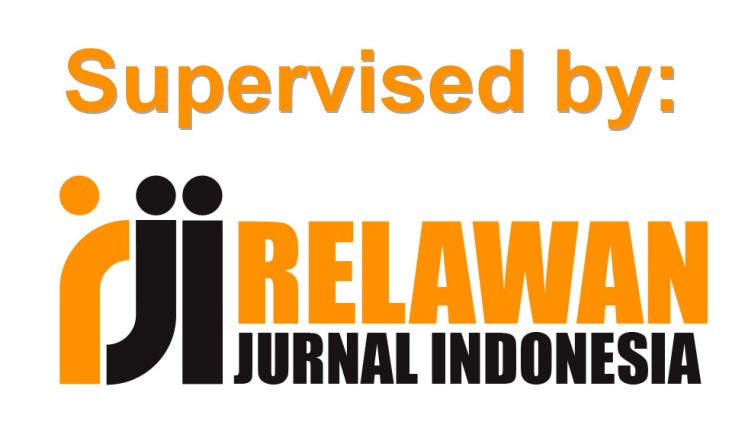Tortor Dance: Preserving Indonesian Culture
DOI:
https://doi.org/10.24114/gjst.v11i2.39059Keywords:
Batak, Cultural Identity, Instagram, Tortor danceAbstract
Indonesia is a multicultural country. It has many tribes, languages, rituals, and even traditional dances. One of the traditional Indonesian dances is Tortor. Batak Toba people usually perform this dance on a special occasion like wedding ceremonies. This study aims to discuss how the Tortor dance symbolizes the identity of the Batak people. In order to help the authors doing the analysis, the qualitative method was applied. To support the observation, the authors used Cultural Identity theory from Stuart Hall. The data was taken from Official Instagram account of Cultures and Tourism Office of Samosir @disbudparsamosir, @festbudayabatak and other literary works. The result shows that some posts in the above Instagram accounts attempted to portray how Batak people preserve their culture, Tortor dance.References
A. J. Udoudo and G. O. Ojo, •New Media and the Development of Education Sector: Appraisal of Selected Schools, SAGE Open, vol. 6, no. 4, 2016, doi: 10.1177/2158244016671373.
Ginting, Bijak. (2021). THE DYNAMICS MEANING OF TORTOR DANCE IN THE CONTEMPORARY AGE: AN ANALYSIS OF MEANING CHANGES IN THE PERSPECTIVE OF SYMBOLIC INTERACTION HERBERT BLUMMER. INTERNATIONAL JOURNAL OF MULTI SCIENCE.
Diana, Tati. (2017). DANCING IN THE MEANING TORTOR WEDDING PARTY BATAK TOBA ETHNIC VILLAGE TANGGA BATU DISTRICT TAMPAHAN TOBA SAMOSIR REGENCY NORTH SUMATRA PROVINCE. Jom FISIP, Volume 4 NO. 1.
Germain & van der Goes. (2002). œArsitektur Batak, Sumatera, in Indonesian Heritage: Arsitektur, Gunawan Tjahjono, Ed. Jakarta: Grolier International, Inc.
Hall, Stuart. 1987. œMinimal Selves. In The Real Me: Postmodernism and the Question of Identity, edited by L. Appignanesi, 44“46. London: Institute of Contemporary Arts.
Hall, S. (1990). Cultural Identity and Diaspora: Identity: Community, Culture, Difference. Lawrence and Wishart.
Heniwaty, et.al. (2019). Analysis of Top Design and Floor Design on Tortor Batak Toba Motion. Britain International of Linguistics, Arts and Education (BIoLAE) Journal. https://doi.org/10.33258/biolae. v1i2.65.
J. van Dijck and T. Poell, •Understanding social media logic, Media Commun., vol. 1, no. 1, 2013, doi: 10.12924/mac2013.01010002.
Napitupulu. (1997). Arsitektur Tradisional Daerah Sumatera Utara. Jakarta: Departemen Pendidikan dan Kebudayaan.
Purba, Mauly. (1989). Mangido Gondang di Dalam Penyajian Musik Gondang Sabangunan Pada Masyarakat Batak Toba. Jakarta: Unpublished Paper, Presented at The Conference of The Society for Indonesia Musicologist.
Renata. (2021). Pengaruh Terpaan Postingan di Instagram dan Daya Tarik Pesan Iklan di Youtube Kemenkes_RI Terhadap Minat Vaksin Covid 19. Jurnal Komunikasi, Volume 4, No. 1.
Sihombing, L.H. & Lestari, P. INSTAGRAM : A MEDIUM IN IMPROVING STUDENTS™ WRITING. Anglo-Saxon : Jurnal Ilmiah Program Studi Pendidikan Bahasa Inggris.
Sitindjak, et.al. (2018). Form and Meaning of Batak Toba House. Advances in Social Science, Education and Humanities Research, volume 207.
Soliha, S.F. (2015). Tingkat Ketergantungan Pengguna Media Sosial dan Kecemasan Sosial. Jurnal Interaksi, 4 (1): 1“10
Downloads
Published
Issue
Section
License
Copyright (c) 2022 Puji Lestari, Lambok Hermanto Sihombing

This work is licensed under a Creative Commons Attribution-ShareAlike 4.0 International License.
Authors published with the Gesture: Jurnal Seni Tari agree to the following terms:
- Authors retain copyright and grant the journal the right of first publication with the work simultaneously licensed under a Creative Commons Attribution License (CC BY-SA 4.0) that allows others to share the work with an acknowledgment of the work's authorship and initial publication in this journal.
- Authors are able to enter into separate, additional contractual arrangements for the non-exclusive distribution of the journal's published version of the work (e.g., post it to an institutional repository or publish it in a book), with an acknowledgment of its initial publication in this journal.
- Authors are permitted and encouraged to post their work online (e.g., in institutional repositories or on their website) prior to and during the submission process, as it can lead to productive exchanges, as well as earlier and greater citation of published work. (See The Effect of Open Access)







